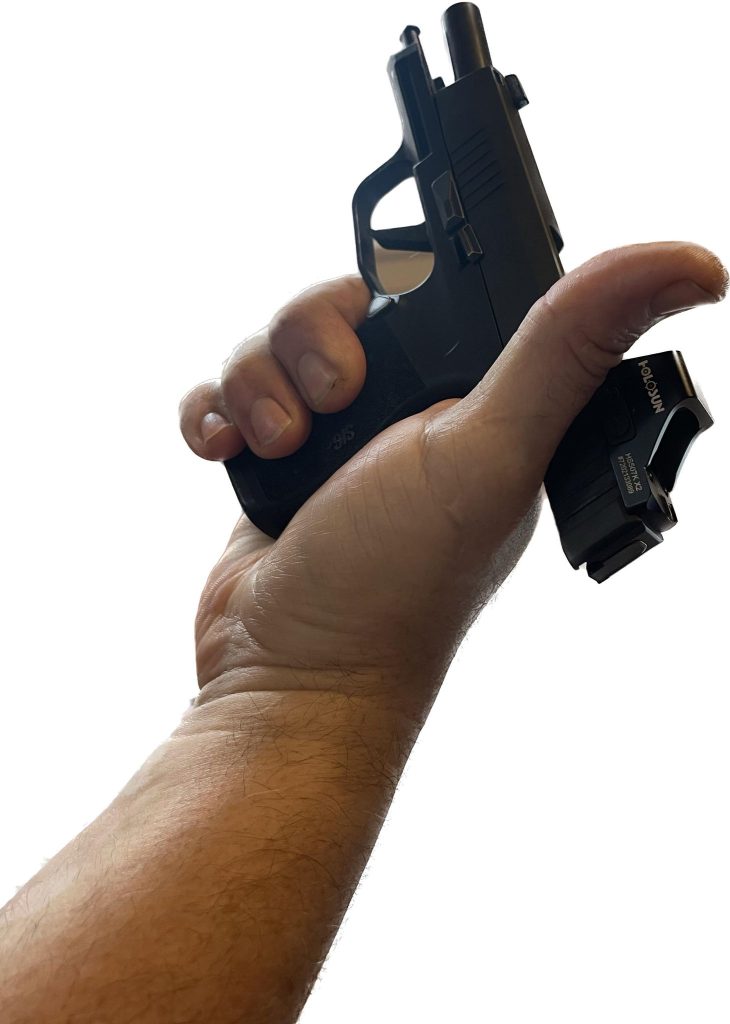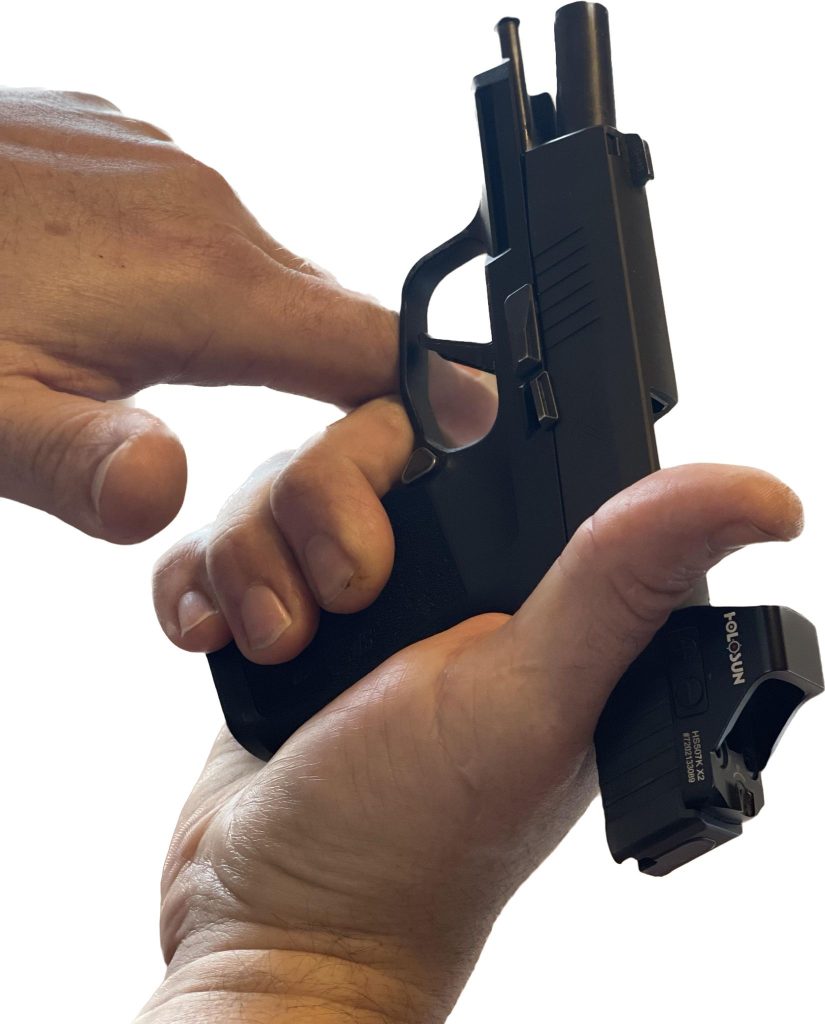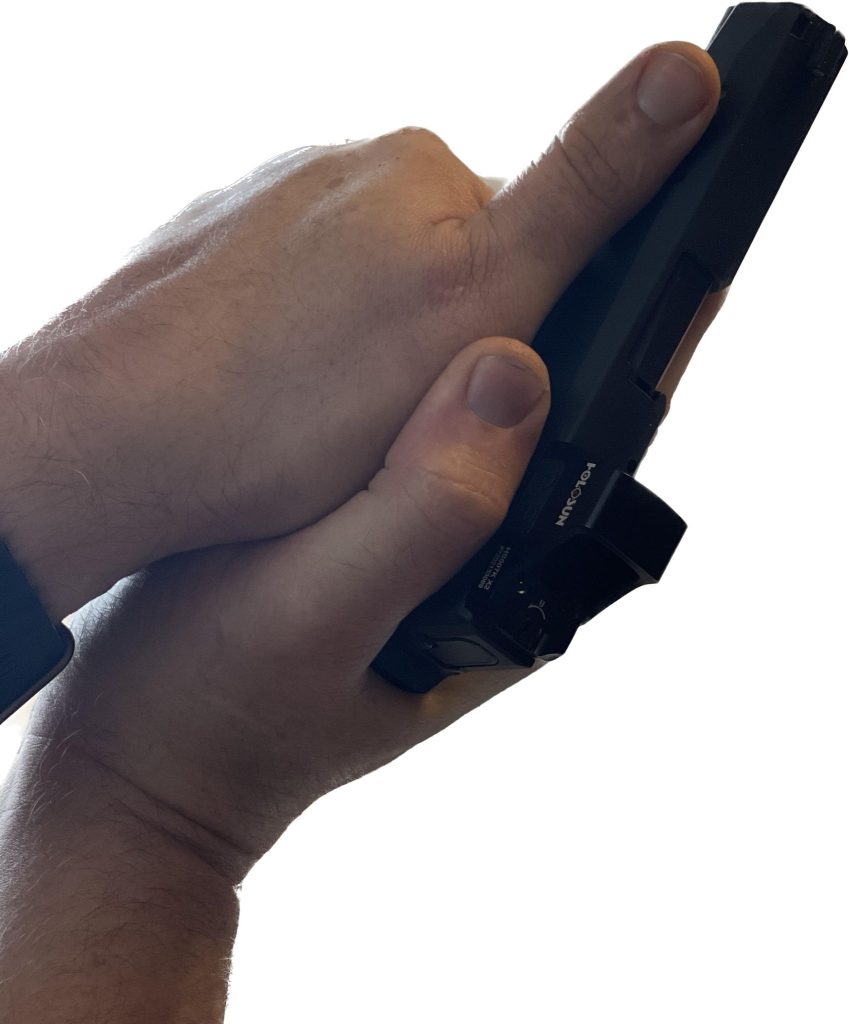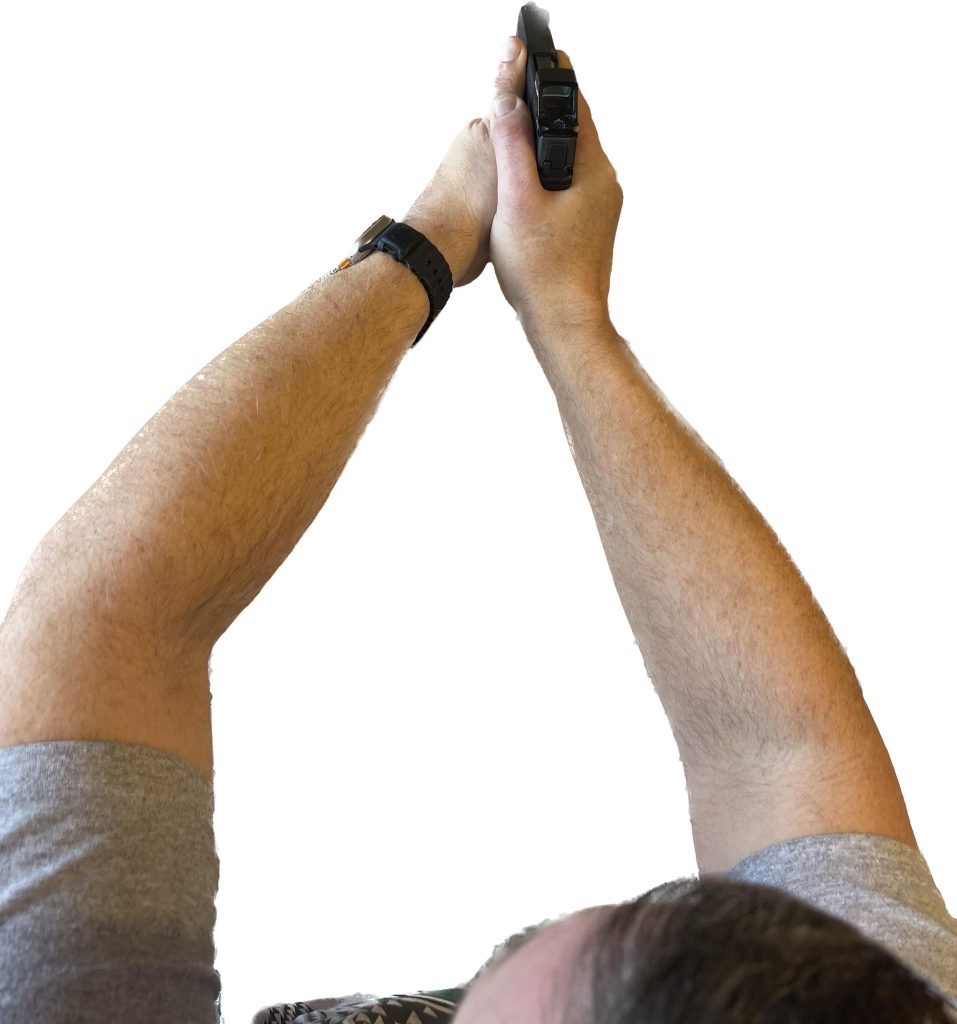A good grip on the gun matters! Practical shooting and marksmanship have similarities and marksmanship is a very important skill that you should have as you build yourself towards practical shooting.
Marksmanship in the traditional sense requires the shooter to execute all the fundamentals of marksmanship and the focus is on accuracy. This traditional grouping of skills we call marksmanship includes, aiming (sight picture & sight alignment together), breath control, hold control, trigger control, & follow through (follow through is debatable).
Practical or defensive shooting does not quite look the same and it should not! We are trying to obtain a degree of accuracy that is “good enough.”
Aim and Aim Well but Do Not Over Aim
Defensive accuracy should allow for larger groups and in doing so find a balance between speed and accuracy. “You cannot miss fast enough to win a gunfight.” “And you can’t hit slow enough to win.”
Another aspect of defensive shooting is our aiming. We tend to over aim our guns. Slight sight deviation at 7 yards and closer results in negligible point of impact movement. It is our platform (think stance/grip) that is causing the miss, not our aiming.
If you do not think I am right about over aiming, find a training pistol equipped with a laser and perfectly aim the sights at 5 yards making note of the point of impact. Next, deviate your sights high, low, and then left and right so that your front sight post is completely out of the notch in each direction. Impact is negligible and still within an 8″ circle’s area.
If you are seeing misses at, say 7 yards and in, you are most likely moving the aligned sights prior to the ignition of the cartridge – translation – you are anticipating and causing a pre-ignition push of the gun to somewhere other than the aligned sights.
Get a Grip, a Good Grip
Your grip matters. How you hold the gun matters. Teach yourself how to grip the gun correctly each time you access the gun; be it from the holster or the nightstand etc. Refuse to accept recoil as you establish your stance and grip on the gun.

The backstrap should sit in the v-notch of your primary hand and set as deeply in the hand as possible. The top of your middle finger should be tight against the bottom of the trigger guard with your index finger high and outside of the trigger guard preferably along the slide and frame. Keep it out of the window unless your sights are aligned, and you have decided to fire. In the words of a friend of mine, “OT-OT, On target, on trigger, off target, off trigger.” Firmly wrap your middle finger, ring finger, and pinky around the pistol and put your thumb up like you are hitchhiking or Fonzie.

Your support hand should join your grip before extension of your arms. Come into the frame of the gun with your support hand like you are karate chopping it at the index finger knuckle. Roll the support hand into the grip by pointing your support hand thumb towards the target. Your original touch point serves as a door hinge and the heel of your hand serves as a door latch. Close the door and hold it latched. You want your hands around, behind, below, and above the gun to mitigate recoil.

Your Elbows Are a Hinge
The position of your elbows can make a big difference. The elbows are a hinge, and we want to combat the effects of recoil which comes towards us and up. By making a slight roll with your support hand elbow turning the hinge point towards the centerline of the body, you have removed the natural hinge point and increased your strength to combat any recoil, allowing you to compress the heels of your hand together firmly. You also should now have some isometric tension being applied to the gun. How you are gripping can make a difference. Imagine the gun is in a vice as you are gripping, you are not squeezing your fingers like you are choking someone out. With both hands on the gun in the proper position, apply pressure to the gun like you are turning two doorknobs into each other, clockwise twist with your left hand and counter-clockwise with your right hand.

Your Platform is Important
Now let us work on that stance. Align your hips to the target so that when you align your pistol to the target there is not any twisting tension in your back. When shooting multiple rounds quickly, you want your body to return the pistol’s aligned sights back to your eye as naturally and effortlessly as possible.
Put your support side foot ahead of your primary side foot so that if you had a straight line in front of you your support side foot heel would be about on the line and your primary side foot’s toe would be on the line. Put your feet at about shoulder width or slightly wider than shoulder width apart. Transfer the weight of your body to the balls of your feet (where the toes meet the foot.) As Jerry Miculek would say, “nose over toes.”
Now with that grip applied to the gun, your arms in a supported position, and your body properly aligned and standing, you have a good foundation!
Practice Gun Control
With this good foundation, go practice some gun control! Start with one round at a time, pressing the gun out and stopping just prior to full extension and firing with flash-sight-picture. Break down your grip and reestablish it each time to build in the process of establishing your grip. After some reps of one at a time, add a controlled pair. Break down your grip after each sequence, getting repetitions in building back that perfect grip and stance. Next do some double taps where you have one sight picture and two trigger presses. Continue the process of breaking down the grip and reestablishing it each time.
Start the process all over again only build the grip from the holster. Start slow and be purposeful. Make sure the grip and stance are right with each presentation. Do not do things faster than you can do them safely, do not outdrive your headlights!
High round counts do not always translate to success. Do the right things enough times with an unloaded gun and then introduce some shooting to it and you will be on a path to doing it with excellence.
